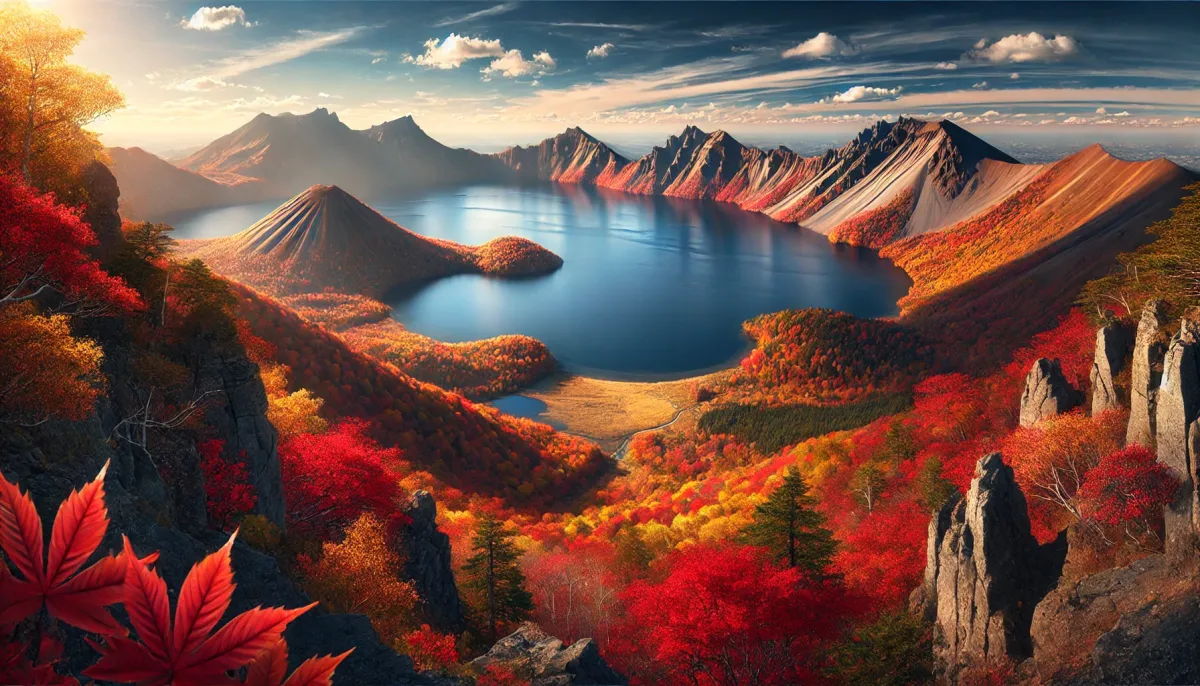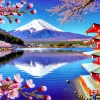Hi everyone, Mark here! I'm back with another adventure, this time from my recent trip to Asia. As a seasoned backpacker with a love for exploring Asian cities and landscapes, I'm always on the lookout for unique and unforgettable experiences. And let me tell you, my journey to Changbai Mountain and Tianchi Lake in China was nothing short of spectacular. This isn't your typical tourist trap; this is a journey into the heart of a majestic volcano and a culturally significant landmark shared between China and North Korea. Get ready for breathtaking views, incredible history, and a journey you won't soon forget!
Changbai Mountain: A Sacred Peak
Changbai Mountain, also known as Baekdu Mountain in North and South Korea, is not only the highest peak in the Korean Peninsula but also holds immense cultural significance. Both North and South Korea consider it a sacred mountain, deeply intertwined with their national origins. This stunning mountain is topped by Tianchi, a volcanic crater lake formed by one of history's largest volcanic eruptions. For North Koreans, it's revered as a "revolutionary sacred mountain," inextricably linked to the revolutionary history under Kim Jong-il's leadership. I first heard of Changbai Mountain years ago, reading about the North Korean leader's winter visit and the annual pilgrimage undertaken by North Korean soldiers. There are even rumors of deep underground facilities used for military purposes, cleverly hidden from satellite surveillance.
My Journey to Tianchi Lake: A Detailed Itinerary
My journey started in Changbai County, after concluding my previous adventures on the Sino-North Korean border. From there, I took a 200km trip to Erdaobaihe Town, the base camp for ascending Changbai Mountain from the northern slope. This was the launchpad for my adventure with my friend Ashu (who features in my Northeast China documentary series "Ashu Explores Northeast," where I'm documenting my journey through Liaoning, Jilin, Heilongjiang, and Inner Mongolia, including border areas and other fascinating spots in Northeast China. Here's a quick rundown of the costs involved:
| Item | Cost (CNY) | Cost (USD) |
|---|---|---|
| Entrance Ticket | 100 | ~$15 |
| Bus Ticket | 80 | ~$12 |
| Shuttle Bus (Round Trip) | 35 | ~$5 |
| Tianchi Peak Shuttle | 80 | ~$12 |
| Total | 305 | ~$43 |
It took approximately 50 minutes to reach the Changbai Mountain North Scenic Area's transfer center, followed by a 15-minute shuttle to the Tianchi foot.
Conquering the 72 Turns to Tianchi: A Breathtaking Ascent
The ascent to Tianchi was an unforgettable experience. I rode in a 10-seater van, navigating the 10.2km, 72-turn mountain road. The driver, a veteran of six years on this route, shared his insights into the challenging journey. The views along the way were simply spectacular, the vibrant colors of the forests painting a stunning panorama that ranged from deep greens and fiery oranges to vivid purples and reds.
The vegetation changed dramatically with altitude. Between 1,700m and 2,100m, we passed through the Erman birch forest (the upper limit of the forest's vertical distribution). Above 2,100m, the landscape transitioned into the alpine tundra, the highest vegetation zone on Changbai Mountain. The change in air quality was noticeable; the air became thinner near the 2,600m summit. It’s incredible to see this transformation firsthand!
Tianchi Lake: A Volcanic Marvel
Tianchi Lake is a breathtaking sight, a massive expanse of deep blue-green water nestled within a volcanic crater. It's China's largest volcanic lake, and also one of the deepest, with an average depth of 204 meters and a maximum depth of 373 meters. Its location, at 2,194 meters above sea level, is truly remarkable, placing it higher than Mount Tai. The lake is a shared border between China and North Korea, the water acting as a border between our nations. This majestic crater lake is fed by rainfall, snowmelt, and groundwater. Its high altitude and enclosed nature keep the water from quickly draining, thus creating this stunning, closed-off alpine lake.
The Cultural Significance of Changbai Mountain
The mountain's significance transcends its natural beauty. Both China and North Korea consider it sacred and a cradle of their nations. The Jin people were the first to name it "Changbai Mountain," later revered as the birthplace of the Manchu, the founding dynasty of the Qing Empire. Emperor Kangxi of the Qing Dynasty declared Changbai Mountain as the origin of the Manchu ancestors, solidifying its importance in Chinese history. In 1962, the China-North Korea Boundary Treaty officially marked Changbai Mountain and Tianchi Lake as a border, with approximately 54.5% of the lake's waters belonging to North Korea and 45.5% to China. I even saw North Korean tourists enjoying the lake from the other side.
Exploring Tianchi and its Surrounding Wonders
We took different hiking routes during our visit and the views constantly changed! Tianchi has three viewing points: North, West, and South, each with its unique perspective. The South Scenic Area is only open during the summer, so we focused on the North and West. During our visit, I even saw some elderly people visiting the area! The accessibility is truly commendable. There are several other key sites around Tianchi, and we were lucky to explore many including the Changbai Waterfall (China's largest volcanic lake waterfall), with its 68-meter drop.
The waterfall’s water flows constantly year-round, even in winter, a testament to Tianchi’s impressive water volume. I also visited the Giant Dragon Hot Springs, a geothermal wonderland with numerous hot springs and the unique Erman birch forests, with their short growing season and incredibly dense wood. Other fascinating sites included Xiaotianci (Little Tianchi), with its perpetually full waters despite lacking an outflow, and the stunning Lvyuan Pool, with its mesmerizing blue-green waters and three cascading waterfalls.
Conclusion: A Must-See Destination for Any Adventurer
My adventure to Changbai Mountain and Tianchi Lake was an incredible journey filled with awe-inspiring landscapes, rich history, and cultural significance. It's a place where nature's power and human history intertwine, creating a truly unforgettable experience. If you’re looking for a unique and adventurous trip to Asia, I highly recommend adding this to your list.







